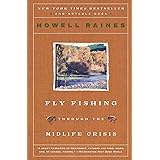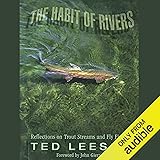Have you ever watched a fishing video and thought, “That’s it, that’s the craziest fishing method I’ve ever seen”? The video above certainly captures a moment that suggests an incredibly unusual approach to catching fish. But what exactly defines a “crazy” fishing method, and why do some anglers push the boundaries of conventional techniques? The world of fishing is vast, and what might be considered standard in one culture or region could be seen as absolutely bizarre in another.
When someone exclaims that a particular technique is the “craziest way to go fishing,” it often points to methods that challenge our expectations. It might involve unusual equipment, unexpected locations, or simply a technique that seems incredibly difficult or dangerous. The thrill of the catch can be amplified when the method itself is an adventure.
Exploring Unconventional Fishing Methods Around the Globe
The concept of a truly crazy fishing method isn’t new; humanity has been inventing ingenious and sometimes peculiar ways to catch fish for millennia. These methods often developed out of necessity, tradition, or simply a desire to outsmart aquatic prey. Some of these practices are still employed today, showcasing the incredible diversity in fishing techniques.
Historical and Traditional Approaches to Crazy Fishing
Throughout history, many fascinating and often challenging methods were devised. Imagine if you lived in a time before modern fishing rods and reels were invented; what unconventional techniques would be explored? It is seen that people adapted to their environments, leading to some truly unique approaches:
- Noodling (Hand-Fishing): In parts of the Southern United States, noodling is a practice where anglers catch catfish with their bare hands. This involves reaching into underwater holes or crevices where large catfish are known to hide, allowing the fish to bite down on their arm, and then wrestling it to the surface. It is a method that demands immense courage and strength, often viewed as an extreme sport.
- Cormorant Fishing: In China and Japan, cormorant fishing is a traditional method where trained cormorant birds are used to catch fish. A snare is often placed around the bird’s neck to prevent it from swallowing larger fish, which are then retrieved by the fisherman. This cooperative effort between human and animal is both beautiful and highly unusual to an outsider.
- Otter Fishing: Historically practiced in various parts of Asia and Europe, trained otters were employed to herd fish into nets or directly catch them for fishermen. The natural hunting instincts of these intelligent animals were harnessed in a partnership that speaks to humanity’s ingenuity.
- Spider Web Fishing: On some Solomon Islands, giant spider webs are collected and fashioned into effective fishing nets. These incredibly strong webs are used to catch small fish in the shallow waters, showcasing a remarkable use of natural resources.
Modern Takes on Bizarre Fishing Techniques
Innovation continues to drive the development of new and sometimes startling methods. What might be considered a crazy fishing method today could simply be a sign of evolving technology or a niche sport gaining traction. The pursuit of larger fish, more challenging conditions, or simply a unique experience drives many modern anglers.
- Drone Fishing: The advent of drone technology has introduced a fascinating new dimension to fishing. Drones can be used to carry bait far out into the ocean or over inaccessible areas, dropping lines precisely where desired. This technique allows for targeting species in areas that would be impossible to reach with traditional casting, truly a next-level approach to the sport.
- Extreme Spearfishing: While spearfishing itself is an ancient practice, modern extreme spearfishing takes it to another level. This can involve free-diving to incredible depths, hunting powerful pelagic species in strong currents, or navigating treacherous underwater environments. The mental and physical demands make it an exceptionally challenging and often dangerous pursuit.
- Magnet Fishing: Not aimed at catching fish, but rather metallic objects, magnet fishing has gained popularity. A strong magnet on a rope is cast into waterways to retrieve lost items like bicycles, tools, and sometimes even historical artifacts. While not “fishing” in the traditional sense, it’s an unusual way to interact with aquatic environments.
The Allure of the Unconventional Catch
Why are people drawn to these non-traditional or even risky methods? The reasons are as varied as the techniques themselves. For some, it is the sheer thrill of the challenge, pushing personal limits and engaging with nature in a more primal way. Imagine if the reward isn’t just the fish, but the story of how it was caught!
Others are driven by tradition, honoring practices passed down through generations. There is a deep respect for cultural heritage that is intertwined with these unique approaches to fishing. Economic necessity also plays a role in many communities where traditional, labor-intensive methods are still the most viable option for sustenance.
For modern enthusiasts, the novelty factor can be a huge draw. In an increasingly digital world, the opportunity to engage in something truly different and share that experience can be highly appealing. A truly crazy fishing method provides not just a catch, but an unforgettable adventure.
Safety and Ethical Considerations in Extreme Fishing Methods
With any fishing method that pushes boundaries, safety and ethics must be paramount. While the pursuit of a unique experience is understandable, it should never come at the expense of personal well-being or the health of aquatic ecosystems. Regulations are often put in place to ensure that fish populations are not overexploited and that fishing practices are humane.
Personal Safety
Many of the methods described above, such as noodling or extreme spearfishing, carry inherent risks. Proper training, protective gear, and an understanding of the environment are essential. It is always recommended that these activities are undertaken with experienced guides or partners.
Environmental and Ethical Impact
Responsible angling means understanding the impact of one’s methods. Concerns about bycatch, habitat destruction, or excessive pressure on fish populations are very real. Even a “crazy fishing method” should be practiced within the framework of conservation and sustainability. It is always important to research local regulations and best practices before attempting any new fishing technique.
Innovation and the Future of Fishing
While some unconventional methods might seem purely recreational or traditional, others represent a form of innovation. What begins as a seemingly bizarre experiment could sometimes lead to more efficient or sustainable practices. The drive to find new ways to interact with our natural resources continues to shape how we fish.
The spirit of exploration that leads to a “crazy fishing method” is ultimately what drives progress in many fields. It encourages us to look beyond the ordinary and to consider new possibilities. Whether for sport, sustenance, or spectacle, the evolution of fishing techniques is a testament to human ingenuity and our enduring connection to the water.
Reeling in Answers: Your Q&A on Crazy Fishing Methods
What is considered a “crazy” fishing method?
A “crazy” fishing method is an unusual technique that challenges traditional expectations, often using unconventional equipment, unexpected locations, or seeming incredibly difficult or dangerous. These methods push the boundaries of how people typically catch fish.
Are unusual fishing methods a new idea, or have they been around for a while?
No, unconventional fishing methods are not new. Humanity has been inventing unique and sometimes peculiar ways to catch fish for thousands of years, often out of necessity, tradition, or simply a desire to outsmart aquatic prey.
Can you give an example of a traditional and a modern unusual fishing method?
Traditionally, Noodling involves catching catfish with bare hands, and Cormorant Fishing uses trained birds. Modern examples include Drone Fishing, where drones drop lines in inaccessible areas, and Magnet Fishing, which retrieves metal objects from waterways.
Why do people try these non-traditional fishing methods?
People are drawn to these methods for various reasons, including the sheer thrill of the challenge, honoring cultural traditions passed down through generations, economic necessity, or simply the novelty of an unforgettable adventure.
Are there important safety or ethical things to consider with these methods?
Yes, safety and ethics are paramount. Many methods carry inherent risks, so proper training and protective gear are essential for personal safety. It’s also crucial to consider the environmental impact and local regulations to ensure conservation and sustainability.








